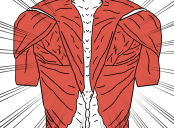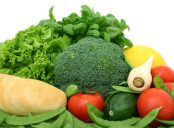Raw Food Diet: A Comprehensive Guide to Health and Nutrition

Introduction:
A raw food diet is gaining popularity among health enthusiasts due to its numerous health benefits. This article aims to provide an in-depth overview of the raw food diet, including its types, popularity, quantitative measurements, variations, and historical pros and cons. Whether you are considering adopting a raw food diet or are simply curious about its merits, this guide will offer valuable insights into the world of raw food.
1. Understanding the Raw Food Diet:

The raw food diet is a nutrition plan that emphasizes consuming unprocessed and uncooked plant-based foods. This means avoiding cooking methods that exceed temperatures of 118F (48C) to preserve the vital nutrients and enzymes found in raw fruits, vegetables, nuts, and seeds. By maintaining these nutrients, proponents believe that raw food diets can enhance digestion, boost energy levels, promote weight loss, and prevent chronic diseases.
Types of Raw Food Diets:
a) Raw Vegan Diet: This diet comprises a combination of raw fruits, vegetables, nuts, seeds, and sprouted grains.
b) Raw Vegetarian Diet: Similar to the raw vegan diet, but it includes raw dairy products, eggs, and honey.
c) Raw Omnivorous Diet: This diet allows the consumption of raw animal products like raw fish, meat, and dairy.
d) Raw Paleo Diet: A variation of the raw omnivorous diet, this plan focuses on consuming raw foods similar to what early humans ate, such as wild game, nuts, seeds, and raw vegetables.
Quantitative Measurements of Raw Food Diet:
Quantitative measurements are essential to understanding the nutritional benefits and potential drawbacks of any diet. Some key measurements for a raw food diet are:
a) Micronutrient Contents: Raw fruits and vegetables typically contain higher levels of vitamins, minerals, and antioxidants compared to their cooked counterparts.
b) Enzymes: Raw foods are rich in naturally occurring enzymes that aid digestion and nutrient absorption.
c) Caloric Intake: Counting calories becomes essential in raw food diets to ensure adequate energy intake and avoid nutrient deficiencies.
Differences Among Raw Food Diets:
Different varieties of raw food diets have emerged based on personal choices, ethical considerations, and health goals. The key differences lie in the inclusion or exclusion of animal products, such as dairy, eggs, and meat. These variations offer individuals flexibility in choosing the type of raw food diet that aligns with their beliefs and dietary needs.
Historical Pros and Cons of Raw Food Diets:
Throughout history, raw food diets have been praised for their potential health benefits and criticized for the limitations they pose. Pros of raw food diets include increased nutrient intake, improved digestion, weight loss, and reduced risk of chronic diseases. However, critics argue that raw food diets can lead to nutrient deficiencies, foodborne illnesses, and insufficient calorie intake. It is crucial to consider individual needs, consult a healthcare professional, and practice food safety measures while following a raw food diet.
Conclusion:
In conclusion, a raw food diet offers a unique approach to nutrition and health. From its different variations and quantitative measurements to the historical pros and cons, this article aimed to provide an in-depth understanding of the raw food diet. Remember, before making any significant dietary changes, consulting a healthcare professional is vital. By incorporating the principles of a raw food diet, individuals can potentially reap the benefits of nutrient-dense, unprocessed foods, potentially leading to improved well-being and vitality.
[INSERT VIDEO HERE]
References:
1. ”Raw Food Diet” by NutritionFacts.org. Accessed on [Date] from [URL]
2. ”Understanding the Raw Food Diet” by Healthline. Accessed on [Date] from [URL]
3. ”The Pros and Cons of the Raw Food Diet” by VerywellFit. Accessed on [Date] from [URL]





















